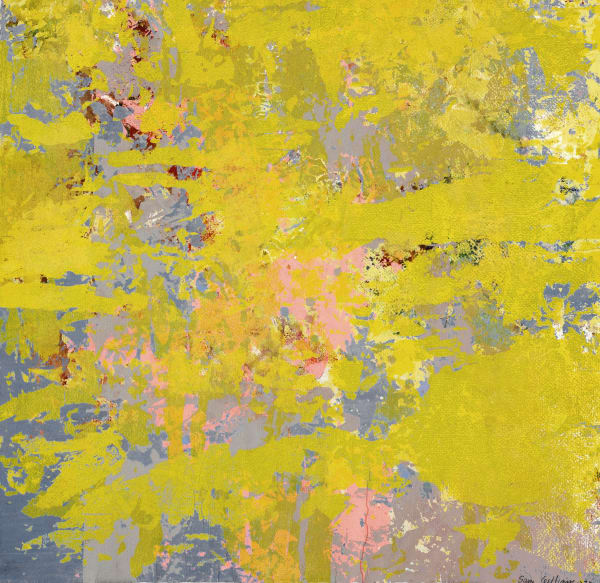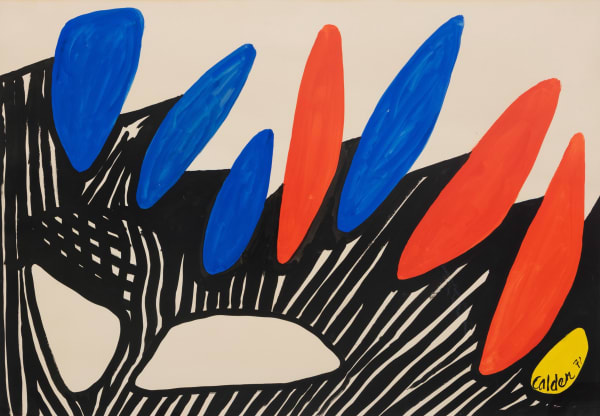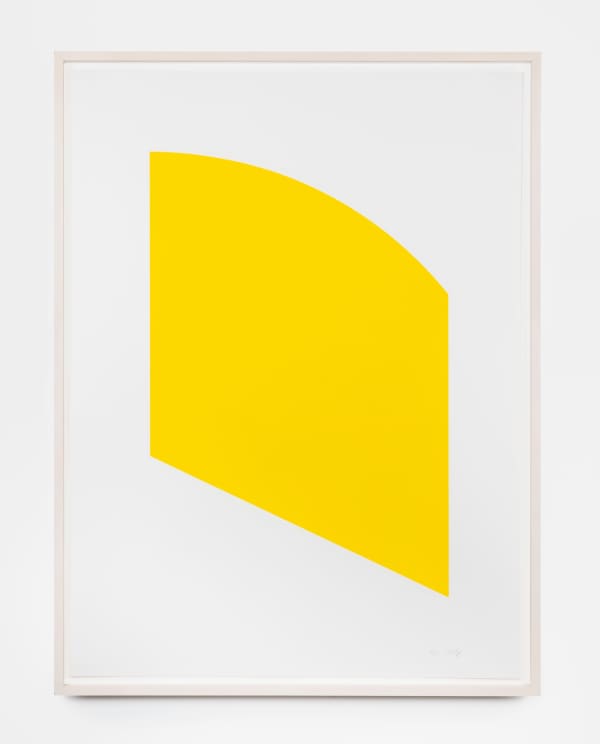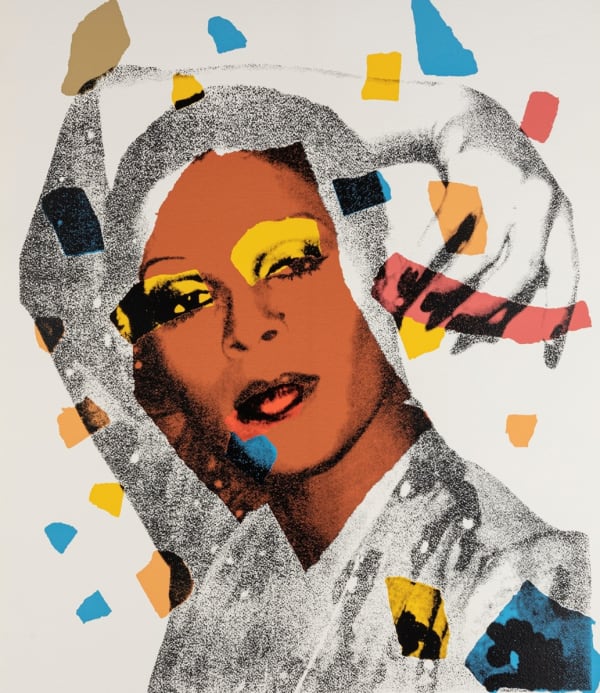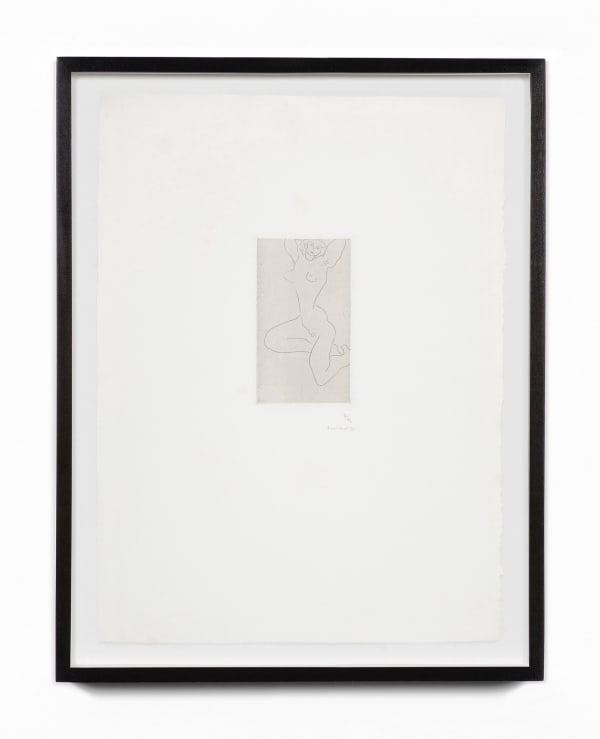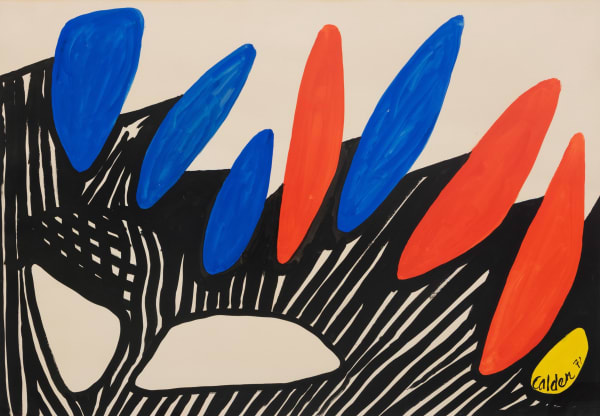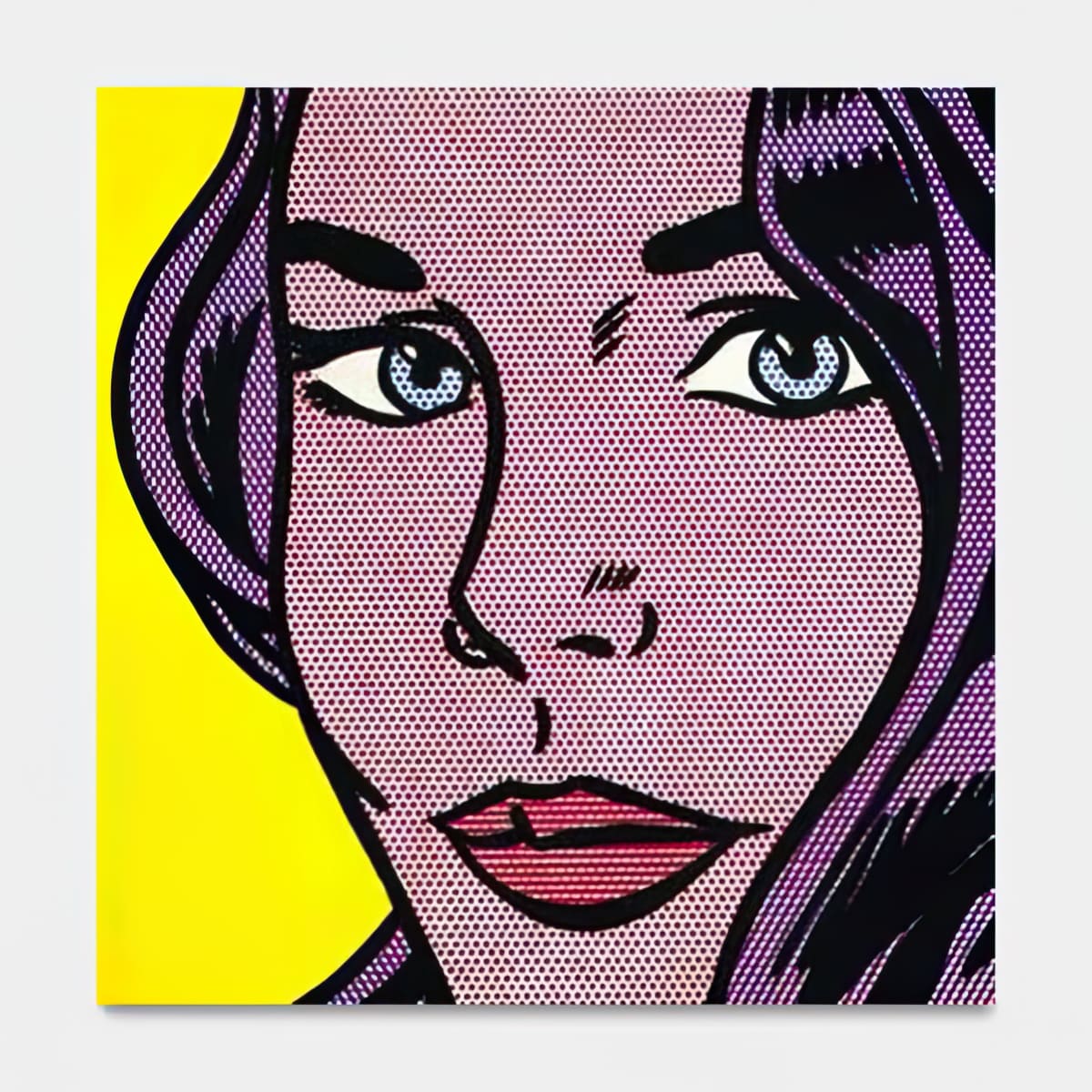“My work isn't about form. It's about seeing.”
Roy Lichtenstein (New York, New York, 1923 — New York, New York, 1997) was a prominent member of the Pop art movement. After both studying and subsequently teaching at Ohio State University, the artist began to create works with cartoon imagery and commercial techniques in a rejection of Abstract Expressionism’s emphasis on subjective, emotional content. He then shifted his focus to imagery drawn from comic books, particularly ones involved with war and romance. He had a one man show at the Leo Castelli Gallery and moved to New York. Lichtenstein’s works are immediately recognizable through his use of primary colors, black outlines, signature Ben-Day dots, and sometimes thought or speech bubbles and onomatopoeia. Though some criticized him of plagiarism, he always altered certain aspects of the comics he drew from, whether narrative or formal elements. Lichtenstein later moved on to take on art history as his subject. His Brushstroke series was a parody of the grand gesture associated with Abstract Expressionism, while his landscapes reprised Impressionism, and versioned Claude Monet’s cathedrals and haystacks with the Ben-Day dots. Lichtenstein's legacy lies in his innovative merging of commercial culture and technique with high art.
-

Gestures
7 Feb - 20 Mar 2023Zeit Contemporary Art is pleased to present Gestures, an online viewing room on view through March 20th, 2023. Bringing together the work of five artists, this presentation looks into the...Read more -

From Paris to New York
Transformations in Printmaking 30 Jul - 24 Sep 2021This online viewing room begins with the growth of printmaking in early 20th century Paris, covers the war and interwar years in Europe, and goes up to and beyond the...Read more -

Joie de vivre
28 Apr - 31 May 2020Zeit Contemporary Art is pleased to present Joie de vivre , an online viewing room that brings together work by modern, post-war and contemporary artists who, in times of crisis,...Read more
-

Zeit Contemporary Art Showcases The History of Modern Prints
Annabel Keenan, Cultbytes, September 18, 2021 -

From Paris to New York: Transformations in Printmaking
Meer, September 4, 2021 -

Transformations in Printmaking Surveyed at Zeit Contemporary Art
Eli Anapur, Widewalls Magazine, August 13, 2021 -

From Paris to New York
Art Plugged, July 30, 2021 -

From Henri Matisse to Carmen Herrera, Transformations in Printmaking at Zeit Contemporary Art
Artfixdaily, July 30, 2021 -

“Joie de Vivre” Instills Creativity, Joy, and Stillness Amidst Chaos
Anna Mikaela Ekstrand, Art Zealous, May 21, 2020 -

The Joie de Vivre of Art
Barnebys Magazine, May 17, 2020 -

The Art of Joy: Online Viewing Room Focuses on Positive Emotions
ARTFIXDAILY, April 28, 2020


